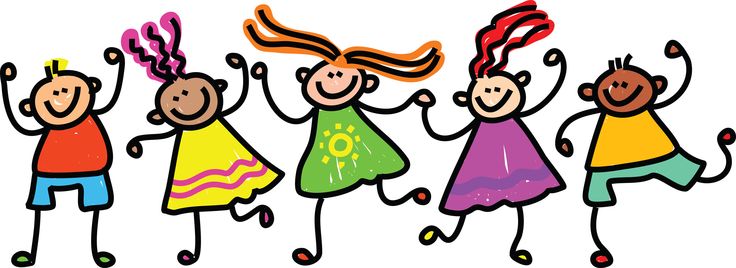Continuing with the back-to-school series this week is the topic of process-oriented and affinities-based learning. We heard Dave Nelson talk about how they use these approaches at Threshold Community Program with their students. Rae Leeper talked about this type of learning at the Rebecca School as well. And, both Soaring Eagle Academy and Oakwood Academy also use these practices.
Dave Nelson discusses the "process"
Process-oriented learning means that instead of teaching facts or a way to do something, teachers will act more like facilitators, scaffolding the students’ process of coming up with ideas and thinking about the process. Affinities-based learning means that we follow the interests of the student in order to inspire engagement and inspiration to learn. Why not ask some DIR Expert Training Leaders for some examples?
I’ve provided this example before here at Affect Autism from psychologist Dr. Gil Tippy, formerly of the Rebecca School where he was a founder and Clinical Director, and now of Dirty Hands Developmental Alliance.

Again, the teacher, ‘playing/acting confused‘, says “Oh! Ok let’s cross the street!” This continues so that the students aren’t simply following along because when they are on their own, they will not have a teacher to follow. Dr. Tippy gives the scenario when a student who takes the subway to school every day confronts a service disruption. If they can’t figure out what to do next, they’re stuck.
Dr. Tippy jokes that his dream is to meet up with his students one day in the future and have them say to him, “When I was younger, I thought you were so slow!”
By feigning ignorance, or acting confused, Dr. Tippy allows the student to come up with a thought or idea on their own, and with practice at doing this, the student gains more confidence across situations to think and figure out what comes next when stumped.
I’ve also heard Dr. Tippy give the example of a 13-year-old who fit in with the other students and ‘seemed’ to function socially, but who began to struggle when entering high school. Through some inquiry, Dr. Tippy determined that the student was constricted at one of the foundational developmental capacities, FEDC 6 (logical thinking). He couldn’t answer the question “Why?” when asked about a film he liked.
Dr. Tippy discovered he had some other challenges as well related to thinking. For instance, he found it too challenging to find items from a shopping list. So Dr. Tippy had his mother facilitate his development at the grocery store. His mother encouraged him to figure out how to navigate the store, finding different items on the shopping list as practice, and over time, he began to develop the thinking skills required to complete this process on his own.
Dave Nelson of Threshold Community Program was kind enough to provide a nice example of process in the adjacent recording. In his class called Problem Solving with three middle-school-aged participants, they did a team building exercise where multiple strings were tied to a pencil where each person holds one of the strings and together, they have to lower the pencil into a cup.

Following each exercise, Dave sits with his students and reflects the affect he sees and feels in the room: “It seems like you were really frustrated about that“, or “I could hear you yelling and I know that meant that you weren’t happy with what was going on“. He makes everyone feel empathized with and attuned to and as much as possible, which helps them re-engage in a conversation about what happened with each other.
Speaking in terms of the Developmental, Individual differences, Relationship-based (DIR) model umbrella under which this learning is taking place, Dave’s students have some higher foundational capacities into symbolic and logical thinking, but with constrictions at the first capacity of shared attention and regulation, and at the fourth capacity of shared social problem-solving.
After Dave was able to co-regulate with the students they were able to reflect on what happened. Two of the students believed the third person was being too rigid and the third person had to absorb that and feel the discomfort of hearing that. They had to stay communicative and be able to take another’s perspective in the midst of that discomfort. This is the essence of process-oriented learning.
How do I navigate the world, interact with other people to solve problems, and get things done and get to a particular goal? This is the work of the fourth capacity of shared social problem-solving. Working on these types of social activities helps the students strengthen this capacity of building emotional resilience, gradually taking perspective, and sitting in discomfort.
The key component to this process is the ‘R’ in the model: Relationship. They have a real sense of trust in Dave and each other. They reflect on what happens and talk about how this will probably happen again. They are learning about what happens to them in a safe, nurturing environment and this helps them advocate for themselves over time.
“It’s very incremental work.”
Dave has seen notable improvement in his students for sticking it out in these kinds of situations with increased confidence and a greater willingness to take the risk of being with someone who frustrates them, or being in a situation that might not turn out well.
Affinities-based learning is about building off of the things that students are passionate about: something that they have a lot of knowledge about, or something they have a lot of interest in. It depends on the developmental level and cognitive level of the student you’re working with.
The basic idea is that–just like in Floortime–you start with where someone is at, building on what they really care about, and that gives them the best opportunity to function at the very top of their box. Next week, we’ll speak with Julia Feltus from the Rebecca School about applying process-oriented learning at different developmental levels.
Until next week… here’s to affecting autism through playful interactions!




Thanks for sharing such wonderful insights. I was actually scouting for some informative material for my daughter, as it was advised in her school, Rebecca School. Thanks a lot for actually taking up a good cause forward with such great steps.
You are welcome, James, and thank you for the comment. You will really like next week’s blog, then! Stay tuned…